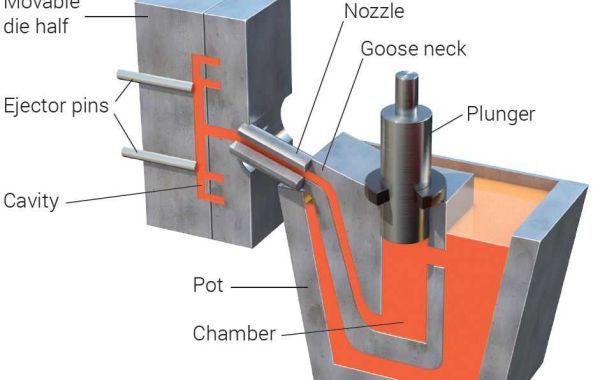Die casting is often used to make components for the automotive industry or decorative hardware and many other small components. In fact, die-cast parts can be found in many things; you are probably just unaware that they are made from die-cast metal.
Gears and locks are typical completed goods. Hooks, toys, door knobs, pumps, power tool housing, golf clubs, and general engineering castings are further examples.
Additionally, they make up the majority of items like taps and pump handles that need the strength of a seamless metal element. Compressor valves, camera housings, and engine fans are more examples of die-cast items.
Zinc is the ideal material for electronic equipment applications because of its exceptional EMI and ESD shielding without gaskets because of zinc's electrical conductivity. Die castings can be used as safe housings and interior enclosures of computers and electronic devices.
Our castings have been extensively utilized across numerous industries for more than 80 years, which is a tribute to the adaptability of the die-cast metal sector.
This is partly because die casting is a productive, affordable process that offers a wider variety of forms and parts than any other manufacturing process. Die-cast parts can be created to enhance the product's aesthetic appeal and have a long service life.
The various benefits of using die-cast components in their next project can help product design engineers.
Utilizing the die casting procedure for your subsequent product or component, decorative trim, and/or finished items has numerous advantages due to its adaptability and advantages:
Components are dimensionally stable and long-lasting.
Comparatively speaking, it can produce complex shapes with tighter tolerances.
In a single, intricately formed portion, it can integrate several functions.
high production rates with minimal to no machining.
It is possible to create parts with thinner walls than those possible with other casting techniques.
a lot more durable than substitute plastic injection moldings.
Within predetermined tolerances, mass production enables hundreds of identical castings.
Castings made of zinc can be polished or simply plated with little to no surface preparation.
softer surfaces compared to the majority of casting techniques, like sand or permanent mold.
For tap drill sizes, holes can be tapped and cored.
Parts' external threads may be incorporated into the cast.
Include integral fastening components like bosses and studs to reduce the cost of assembly.
Castings made of zinc have excellent corrosion resistance.
However, because die casting is a high-volume production method, the number of parts needed each year must be sufficient to cover the cost of the tooling.








